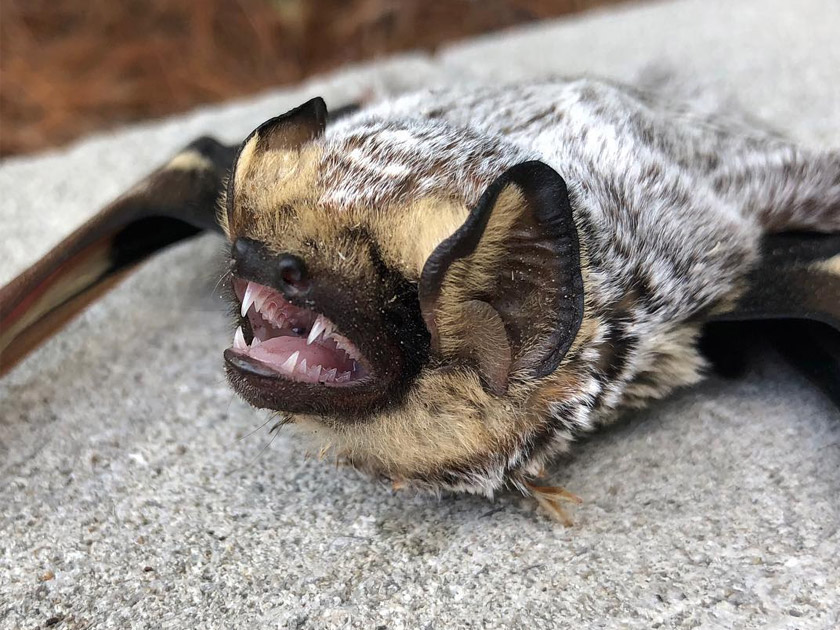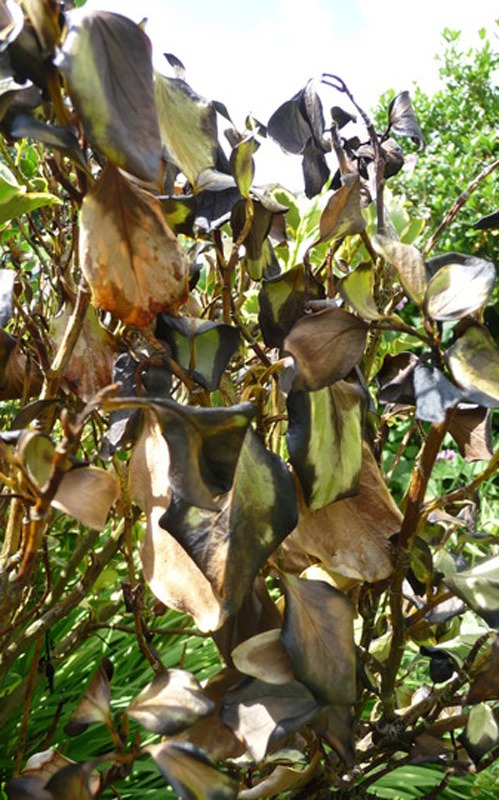Anyone with a garden in New Orleans knows that humidity is what Southerners do best. And though many plants are made to take the heat, excessive dampness is not always what they do best. Many times, dampness in plants can lead to root rot and though it can happen to any plant, root rot can be fixed and avoided with prevention.
With its dramatically elongated purple-black petals resembling a bat in flight, the bat plant (Tacca chantrieri) makes a mesmerizing addition to indoor plant collections. However, these tropical beauties are prone to fungal and bacterial rot if their care needs aren’t properly met.
In this comprehensive guide, we’ll explore the common causes of bat plant rot and effective prevention strategies to keep your specimen flourishing
Understanding Main Causes of Rot
Rot in bat plants stems from a few key factors
Overwatering
Excessive soil moisture is the number one cause of rot. Bat plants prefer drier conditions between waterings. Too much water deprives roots of oxygen encouraging fungal or bacterial rot to set in. Waterlogged soil also leads to root rot.
Poor Drainage
Bat plants require loose, well-draining soil. Dense, compaction-prone potting mixes or pots lacking drainage holes readily become waterlogged after watering. These conditions spur rot when roots sit in soggy soil.
High Humidity & Poor Airflow
While bat plants appreciate moderate humidity, excessively moist air causes fungal leaf spot and crown rot diseases. Stagnant air also raises rot risk by preventing drying.
Pests
Destructive pests like snails, slugs, and fungi gnats spread bacteria and fungi that induce rot as they feed on plants. Their damage also creates entry points for pathogens.
Cold Temperatures
Chilly temps below 60°F combined with wet soil frequently encourage rot fungi and bacteria to thrive. Cold plant stress inhibits natural defenses too.
Preventing Rot Starts With Smart Watering
The key to avoiding bat plant rot is mastering a proper watering regimen. Follow these best practices:
-
Water only when the top several inches of soil become dry. For indoor plants, this is typically every 7-14 days.
-
Always pour off any water pooled in decorative outer pots after watering. Never let plants sit in water.
-
Allow soil to dry out moderately between waterings. Err on the side of underwatering.
-
Water thoroughly until it drains from the bottom drainage holes, then stop. No need to keep pouring.
-
Adjust watering frequency based on factors like light, humidity, temperature, and season.
-
Water less during cooler winter months when growth slows.
Providing Proper Growing Conditions
In addition to smart watering, maintaining suitable growing conditions deters rot:
-
Plant in loose, well-draining potting mixes, ideally amended with perlite, orchid bark, or pumice.
-
Use containers with ample drainage holes and water-catching saucers.
-
Situate plants where they’ll receive bright indirect light to encourage stronger growth.
-
Supplement humidity around plants using pebble trays or humidifiers.
-
Ensure adequate air movement with fans. Stagnant air raises rot risk.
-
Keep indoor plants at 65-80°F and move away from drafty areas.
-
Apply balanced liquid fertilizer monthly during spring through fall to nurture plant health.
-
Monitor for pests and treat early using gentle horticultural oils or insecticidal soaps.
Battling Existing Rot: Act Swiftly!
If you detect rot in your bat plant, act immediately to save it:
-
Prune off all rotting roots, stems, or leaves using sterilized pruners. Remove at least 2 inches into healthy tissue.
-
Skip watering and allow soil to fully dry out for 7-10 days. Don’t water again until plant shows new growth.
-
Consider repotting in fresh, sterile potting mix if root rot is extensive. Trim back roots by half.
-
Treat remaining plant with fungicides containing neem oil, sulfur, copper, or hydrogen peroxide.
-
Remove source of excessive moisture, improve airflow, and monitor soil moisture diligently.
With quick intervention at the first sign of rot, you can often rescue affected bat plants before damage becomes too severe. Prevention is more effective, however, so cultivate healthy plants through attentive care.
Enjoy Your Rot-Free Bat Plants!
While sensitive to overwatering, bat plants offer a hugely rewarding houseplant experience when their needs are met. By mastering a proper watering regimen, providing suitable growing conditions, and addressing issues early, you can readily avoid the heartbreak of rot. Do your part, and your bat plants will flourish and delight for years to come!

What is Root Rot?
Root rot is a plant disease that can be caused by overwatering, poor drainage, or by soil fungi. Like many plant diseases, root rot is hard to treat and prevention is the best way to avoid it.

What are the Signs of Root Rot?
Root rot is often hard to detect until a lot of damage has been done. Signs of root rot are slow growth, mushy stems, and wilting, yellow, distorted leaves (especially when the plant has been well watered, as wilting leaves can also be a sign of a dry plant). Usually the soil will smell rotten and the roots will appear to be reddish brown.
Once the symptoms of root rot are identified, the best thing one can do is remove the plant and replace it. Many times, the plant cannot correct course. Source: hutton.ac.uk
Treating Root Rot Rescueing Tacca Chantrieri Bat Plants in My Tiny Tropical Garden
FAQ
What is the best way to prevent root rot?
What is the common cause of root rot?
What is a natural anti rot for plants?
Can a plant recover from root rot?
What should I do if my bat plant has root rot?
Cut off any infected leaves or stems using clean shears and dispose of them immediately. This will prevent further spread of the disease to healthy parts of the plant. If your bat plant has root rot, soil amendments may be necessary to improve drainage and prevent fungal growth.
How do you know if a bat plant has root rot?
It is caused by overwatering or poor drainage, which creates an environment where fungi can thrive. Signs of root rot include yellowing leaves, wilting stems, and a foul smell coming from the soil. To prevent root rot, make sure to water your bat plant only when the soil is dry to the touch.
Why is my bat plant rotting?
Root rot is a common problem for many types of plants, including bat plants. It is caused by overwatering or poor drainage, which creates an environment where fungi can thrive. Signs of root rot include yellowing leaves, wilting stems, and a foul smell coming from the soil.
How to prevent root rot?
To prevent root rot, it is essential to water the plants correctly and ensure proper drainage. If you notice any signs of root rot, it is crucial to take immediate action to prevent the spread of the disease. You can take out the plant from the pot, shake the soil present in between the roots, and try to take some damage control.
